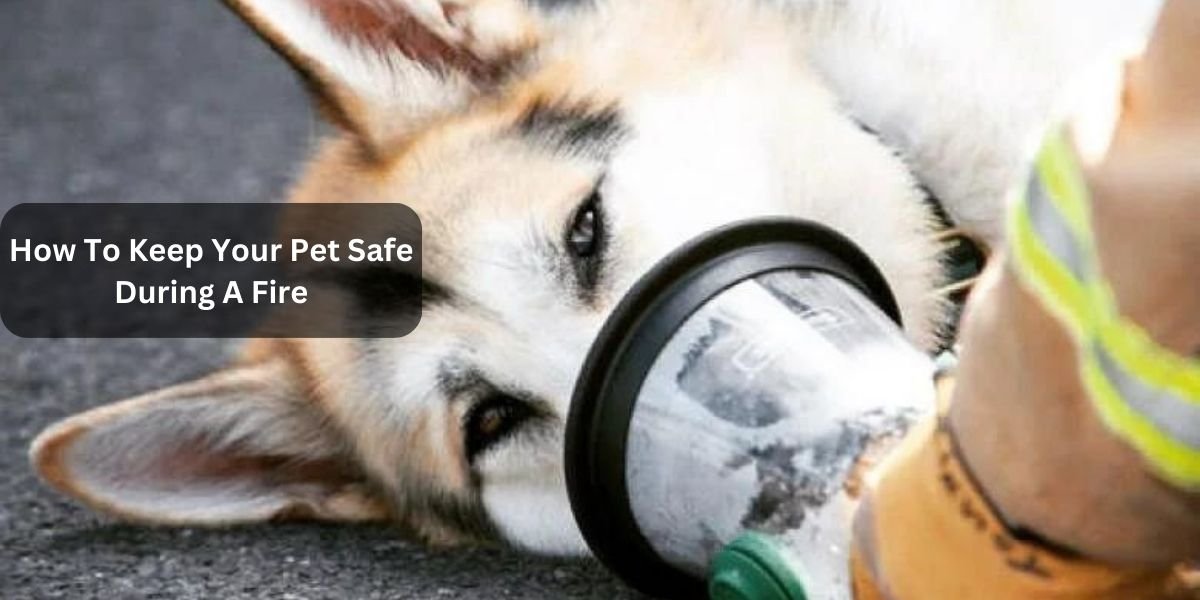Introduction
Our pets are not just animals; they are cherished members of our families. When disaster strikes, such as a fire, ensuring the safety of our furry companions becomes a top priority. In this guide, we’ll explore practical steps and strategies to keep your pet safe during a fire, emphasizing preparation, communication, and quick decision-making.
Understanding Pet Behavior
Pets can sense danger, and their behavior may change when faced with a fire or emergency situation. It’s crucial to recognize signs of distress, such as restlessness, excessive barking, or attempts to hide. Understanding your pet’s behavior can aid in swift evacuation.
Emergency Preparedness
Creating a Pet Emergency Kit
Assemble a comprehensive pet emergency kit that includes essential items such as food, water, medications, veterinary records, and comfort items like a favorite toy or blanket. Having this kit readily available can save precious time during an evacuation.
Identification and Microchipping
Ensure your pet has proper identification, including a collar with an ID tag containing your contact information. Additionally, consider microchipping your pet, providing a permanent and secure form of identification in case they get separated from you during a fire.
Planning Evacuation Routes
Pet-Friendly Evacuation Shelters
Research and identify pet-friendly evacuation shelters in your area. Not all shelters accept animals, so knowing the locations that welcome pets ensures a safe haven for your furry friend during an emergency.
Practice Evacuation Drills
Regularly practice evacuation drills with your pet to familiarize them with the process. This helps reduce stress during a real emergency and allows you to identify any challenges that may arise.
Fire Safety Measures
Pet-Safe Spaces in Your Home
Designate specific areas in your home where your pet can seek refuge in case of a fire. Ensure these spaces are easily accessible and free from potential hazards. This could be a room with a secure exit or a cozy corner away from the kitchen.
Pet Fire Safety Stickers
Place visible pet fire safety stickers on windows and doors to alert firefighters to the presence of pets in your home. These stickers typically include the number and types of pets, aiding rescue efforts.
During a Fire
Immediate Action
If a fire breaks out, prioritize your safety and that of your family. Once human safety is ensured, focus on your pet. If time allows, use a leash or carrier to safely contain your pet during evacuation.
Stay Calm and Reassure Your Pet
Pets can pick up on their owners’ stress, so maintaining a calm demeanor is crucial. Reassure your pet with a soothing voice and gentle gestures to minimize their anxiety during the chaos of a fire.
Conclusion
Ensuring your pet’s safety during a fire requires proactive planning and quick decision-making. By understanding your pet’s behavior, preparing an emergency kit, identifying safe evacuation routes, and implementing fire safety measures, you can significantly increase the likelihood of a positive outcome for both you and your beloved companion.
FAQs (Frequently Asked Questions)
Q1: Should I include my pet’s favorite toys in the emergency kit?
A1: Yes, including familiar items like toys or blankets in the emergency kit can provide comfort to your pet during stressful situations.
Q2: Can I evacuate to any shelter with my pet?
A2: Not all shelters accept pets. Research and identify pet-friendly shelters in your area ahead of time to ensure a safe haven for your furry friend.
Q3: How often should I practice evacuation drills with my pet?
A3: Regularly practice evacuation drills to familiarize your pet with the process. Quarterly drills can help keep the routine fresh in your pet’s mind.
Q4: Is microchipping necessary if my pet already wears a collar with an ID tag?
A4: While a collar with an ID tag is essential, microchipping provides an additional layer of security, as collars can be lost or removed.
Q5: Are there specific hazards in the home that I should be aware of for my pet’s safety?
A5: Identify and eliminate potential hazards in your home, such as loose electrical cords or toxic plants, to create a safe environment for your pet during a fire.



